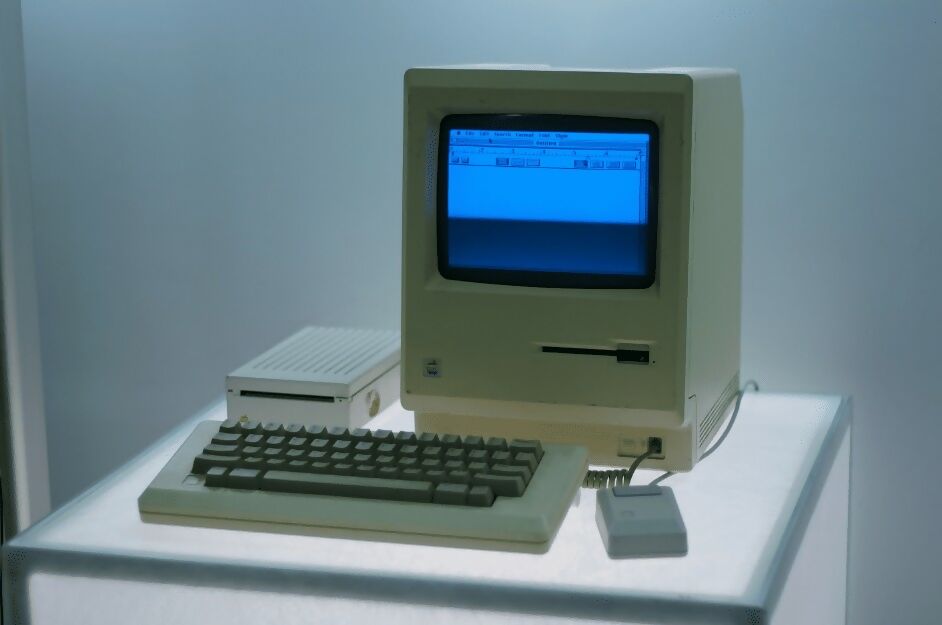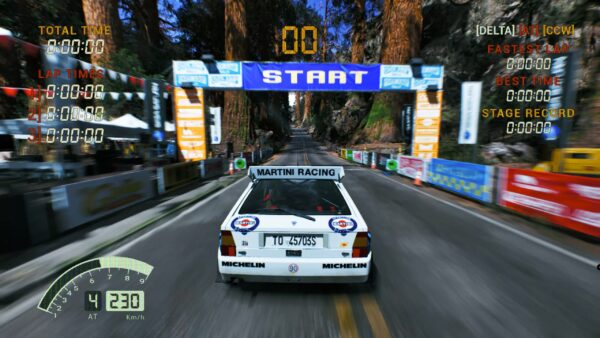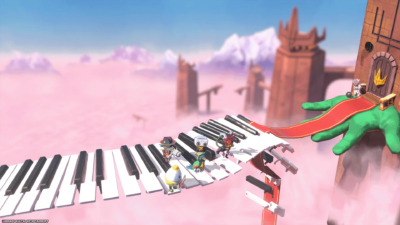
Mr Biffo takes us on a journey back to the early days of the point and click adventure – and how it began with the invention of the humble mouse…
Many gamers of a certain vintage will no doubt be familiar with Beam Software’s The Hobbit – released by Beam’s UK publishing outfit, Melbourne House. For many of us, this 1982 adventure was not only our introduction to Middle-earth – not least because a copy of Tolkien’s book was shoved in with every game – but also the very concept of adventure games themselves.
Though it began life as a ZX Spectrum title, pretty much every home system ended up with a version of The Hobbit eventually. It was, in its own way, as ubiquitous to early eighties gaming as Jet Set Willy or playground piracy, ultimately selling a robust million copies.
What made it stand out was how different it felt from most games at the time. Not because it was an adventure game – there were plenty of those already. But where most game worlds were built solely to bend to the presence of the player, the Middle-earth of The Hobbit carried on around you regardless. Non-player characters would wander in and out of scenes, or start singing needlessly about gold, even if you did nothing.
This genius approach to a typically static genre was the notion of one Veronika Megler, a University of Melbourne computer science student, who landed a part-time job at Beam to help pay her way through her senior year. She was assigned the task of programming The Hobbit, bringing her friend Philip Mitchell along for the unexpected journey.

It wasn’t exactly a dream job; no hardcore gamer herself, Megler had found the few earlier adventure games she’d played rather boring, in part because of how lifeless their worlds seemed. But this was something she sought to fix, giving every character in The Hobbit their own independence and agency. When left to their own, unpredictable, devices, The Hobbit’s non-player cast could even get themselves killed – an unexpected consequence of programming routines that the blood-thirsty Megler saw no reason to change.
This was The Hobbit’s main innovation – extremely slow-loading graphics aside – that set it apart in an already crowded text adventure market. Megler now works for Amazon Web Services, and The Hobbit remains the only gaming credit to her name.
Will Crowther’s Adventure (also known as Colossal Cave Adventure) had breathed life into the text adventure lungs in 1975, providing inspiration to Zork, Mystery House, and Warren Robinett’s Adventure for the Atari 2600. The latter was, by Robinett’s own admission, an attempt at a purely graphical version of Crowther’s earlier game. Without it, we wouldn’t have had the Zelda series, it was a key component of the Ready Player One book and movie, and even featured the first in-game Easter egg.

Robinett wouldn’t be the last games designer to try and reimagine what an adventure game could be, but the next real innovation in the genre came with the advent of the point-and-click. However, before players would be able to point and click, somebody needed to invent something for them to point and click with, otherwise it’d be like inventing the horse-drawn cart before the wheel.
Mickey-taking mice
Like so much scientific advancement, the mouse was a product of war. The forebear of the computer mouse was the track-ball (then called the roller ball), invented in 1946 by British scientist Ralph Benjamin. It was used as an interface for an analogue radar plotting system, used to predict and calculate the future position of enemy aircraft.
The invention of the first real computer mouse, as we know it, happened over 20 years later in 1967, when engineer and inventor Douglas Carl Engelbart applied for a patent for a wooden casing incorporating two internal metal wheels. In the words of the patent, it was an “X-Y position indicator for a display system”.

He coined the nickname “mouse” due to the way the connecting wire looked like a mouse’s tail. He also referred to the on-screen cursor as a “bug” – a term which never became widely adopted, and ended up having very different connotations – and the rather more appropriate CAT. Though why didn’t they go with “cheese” is anyone’s guess.
Engelbart later licensed his invention to Apple for around $40,000, though never received a cent in royalties. Interestingly, Engelbart also foresaw a future in which computing would be collaborative and networked. His views were considered unfashionable at the time, clashing with younger programmers who were suspicious of any kind of centralised computing power.
Around the same time that Engelbart was working on his mouse, a similar project was underway at German radio and TV hardware company AEG-Telefunken. The company had evolved an earlier track-ball device used with the SIG-100 vector graphics terminal.
Alas, unlike Engelbart, AEG failed to get its invention patented.

The long-forgotten Xerox Alto, released in 1973, was the first commercially available computer to use a mouse. The system itself may not have reached the ubiquity of the later Mac, but the new style of hardware interface was considered an immediate success.
By 1982, computer mice were becoming more common among high-end systems, and pretty much all of them were made by one company: The Mouse House. The company’s founder Jack Hawley – who once described himself, not entirely seriously, as “a great inventor” – had been making computer mice since 1975. The peripheral remained far from widespread, however, costing upwards of $400 – and on more than one occasion, Hawley took a call from a confused buyer looking to purchase live mice.
It was 1984’s Macintosh 128K which took mice mainstream. Apple had already released a mouse for its Apple Lisa, but the 128K Mac’s success as a computer for desktop publishing made the mouse an essential component. The following year, both the Amiga 1000 and Atari ST were released with mice of their own.

It was on the Macintosh that the first bona fide point-and-click adventure game would be released; Silicon Beach Software’s Enchanted Scepters (sic) in 1985. Though adhering to the genre’s well-trodden fantasy roots as far as story and setting goes, it remained a way off the complexity of Broken Sword – or even Leisure Suit Larry. Interaction was controlled through a series of drop-down menus to access commands and a player’s inventory.
The same year, ICOM’s Déjà Vu – a tongue-in-cheeky detective noir tale – moved the point-and-click genre further forward still, using a drag-and-drop interface, which allowed for interaction with the graphics window. This was the dawn of the point-and-click as we know it.





